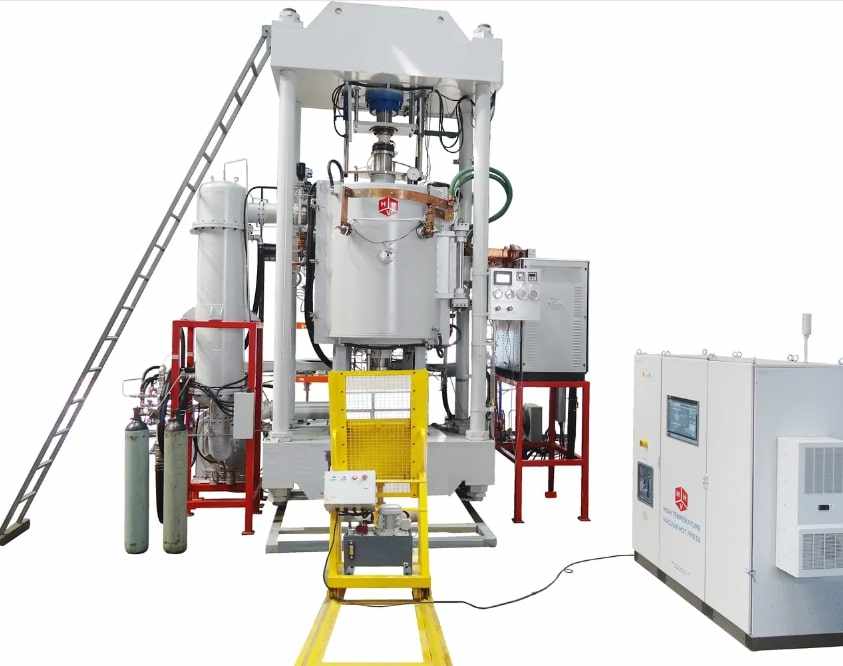Vacuum heat treatment is a critical process in modern metallurgy and precision engineering, enabling manufacturers to harden, temper, anneal, or carburize components without surface oxidation or contamination. At the forefront of this technology is HHV Thermal Technologies (HHVTT), a trusted name in India’s vacuum solutions market. Their Vacuum Heat Treatment Furnaces are fully automated, featuring programmable quenching cycles, multi-point soaking, and computer-based controls. These furnaces are built to meet stringent standards such as NADCAP, CE, and customer-specific aerospace/defense quality protocols. Ideal for industries like aerospace, automotive, defense, and tool manufacturing, HHVTT’s systems combine design precision with process repeatability.
What vacuum levels are typically used in HHVTT’s vacuum heat treatment furnaces, and how do different vacuum regimes affect metallurgical outcomes?
Answer: HHVTT vacuum heat treatment furnaces typically operate in high-vacuum conditions, often in the range of 10⁻³ to 10⁻⁵ mbar. These low pressures eliminate oxygen and other reactive gases, reducing the risk of oxidation, decarburization, or scaling.
Medium vacuum (~10⁻³ mbar): Suitable for processes that can tolerate slight residual gases, like general hardening.
High vacuum (~10⁻⁵ mbar): Essential for aerospace or medical components where ultra-clean surfaces are required.
This vacuum environment ensures uniform heat transfer and improves microstructural integrity.
Can you describe the multi‑point soaking and gas quenching cycle controls implemented in HHVTT’s automated furnace systems, and how they enhance process repeatability?
Answer: HHVTT furnaces are equipped with multi-zone temperature control and multi-point soaking logic, ensuring uniform temperature distribution across complex geometries. The automation system includes:
Programmable ramp-up, hold, and cool-down phases.
Closed-loop PID control to regulate each zone.
Gas quenching capability using nitrogen, argon, or helium, with adjustable pressure and flow.
These features ensure repeatability, as the same thermal profile can be executed with minimal variation across batches - critical for industries like aerospace or automotive that demand tight tolerances.
What are the options for quenching gases in HHVTT furnaces, and how do their properties influence quenching rates and material integrity?
Answer: HHVTT offers quenching systems compatible with inert gases such as:
Nitrogen (N₂): Cost-effective and suitable for most steels.
Argon (Ar): Chemically inert, ideal for reactive alloys or where nitrogen could cause embrittlement.
Helium (He): Superior thermal conductivity, used when ultra-fast quenching is needed.
The selection of quenching gas affects cooling rate, microstructure, and mechanical properties. For instance, fast helium quenching can produce finer grain structures, improving toughness, while argon ensures stability in titanium alloys.
How does HHVTT ensure temperature uniformity and control- including the design of heating zones and thermal insulation- in their vacuum heat treatment furnaces?
Answer: HHVTT furnaces utilize graphite or molybdenum hot zones, segmented into multiple heating zones. Key design elements include:
Independent zone control to correct temperature gradients.
High-grade ceramic fiber insulation for minimal heat loss.
Advanced thermocouple arrays to monitor and adjust temperatures at critical points.
This uniformity is essential for complex or large components where uneven heating can lead to warping, internal stress, or variable hardness.
What mechanisms or features does HHVTT employ to minimize contamination and maintain consistent furnace performance over long cycles?
Answer: Contamination control is central to HHVTT’s design philosophy. Their furnaces incorporate:
Oil-free vacuum pumping systems (e.g., turbomolecular or dry scroll pumps).
Cleanable hot zones, often using replaceable insulation modules.
3D-based mechanical and thermal design to prevent “cold spots” where contaminants could condense.
Additionally, regular bake-out cycles and purging routines are programmed to keep the chamber clean, ensuring long-term repeatability and surface cleanliness.
How do HHVTT’s vacuum heat treatment systems accommodate different material families or heat-treatment processes, and what customization options are available?
Answer: HHVTT furnaces are modular and customizable, making them suitable for:
Tool steels (hardening/tempering)
Stainless steels (bright annealing)
Superalloys (ageing)
Titanium alloys (stress relieving or alpha case removal)
Customization options include:
Horizontal or vertical configurations
Different hot zone materials (graphite, molybdenum)
Quenching pressure ranges up to 10 bar
Integration with SCADA and MES systems
Such flexibility ensures that the furnace can be tuned for industry-specific thermal cycles and materials.
Conclusion
Vacuum heat treatment furnaces, like those engineered by HHV Thermal Technologies, offer unmatched control, cleanliness, and consistency for thermal processing applications. From their robust automation to high-vacuum integrity and multi-zone heating, these systems are designed to meet the highest quality demands across aerospace, automotive, and high-precision manufacturing. Whether you're upgrading your heat treatment capability or investing in a new facility, HHVTT’s vacuum furnace solutions deliver long-term performance with precision-engineered results.
For more information, visit the website: https://hhvthermaltech.com/








Write a comment ...